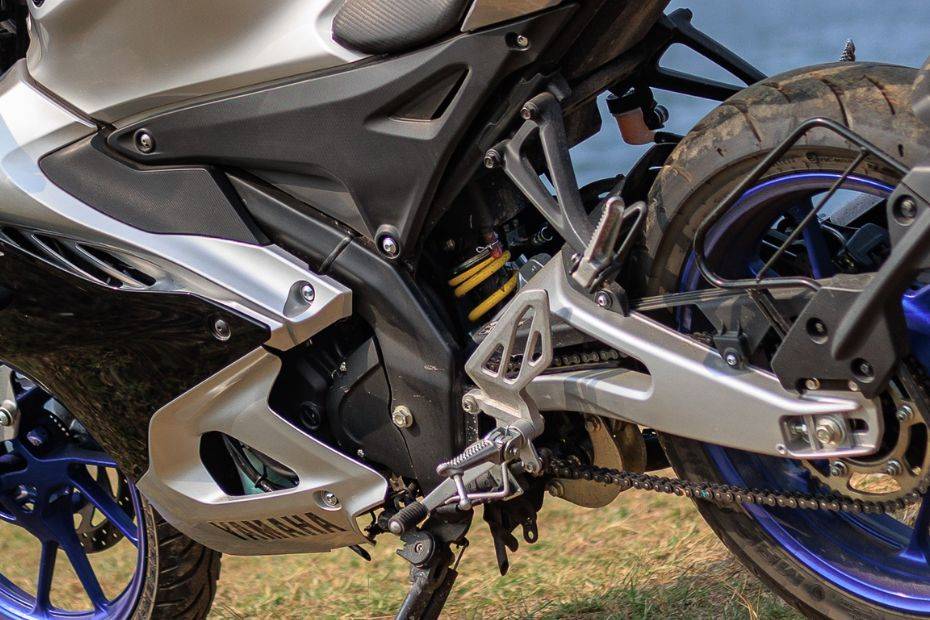Linked Monoshock: Motorcycle Terms Explained
Published On Feb 28, 2024 06:00 PM By Team Bikedekho for Yamaha R15 V4
- 5385 Views
We see linked monoshocks on many sportbikes, but how does it differ from a conventional monoshock

A linked monoshock is a type of rear suspension used in modern-day sports bikes and is an evolved form of a conventional monoshock. Compared to standard monoshock systems, in which the entire assembly of monoshock is mounted directly on the swingarm or frame of the motorcycle, the linked monoshock setup uses an extended link for its mount.
In a linked monoshock system, the extended link emerges from the main frame of the motorcycle, which is placed alongside or below the swingarm, on which the shock absorber is mounted. This entire assembly of linked monoshock runs parallel to the swingarm.

The primary advantage of a linked monoshock is that it can be mounted almost vertically, making it more effective in the absorption of bumps while also keeping the motorcycle stable. Also, because of the additional leverage the linkage provides, the shock absorber can run with a stiffer spring, making it preferable for sport bikes that need stiffer suspension setups for better grip and even off-road bikes, which will encounter a lot of bumps while riding, where softer springs will bottom out easily.
In essence, it offers a more advanced damping system when compared to other types of rear suspension. This feature is frequently observed in sport bikes, including more budget-friendly options like the Yamaha R15.
